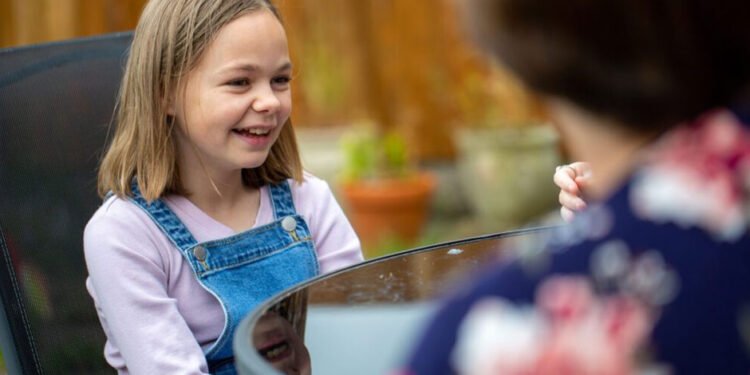When a child cannot safely remain with their biological parents, two main pathways of care emerge: fostering and adoption. Both offer love, stability, and the chance to thrive, but they differ profoundly in purpose, legal authority, and emotional experience.
To many, fostering and adoption may seem interchangeable because both involve children living in homes outside of their biological families. Yet in reality, the frameworks, responsibilities, and outcomes are very different. Understanding these differences is crucial for families considering either path, as well as for communities seeking to support children through difficult transitions.
Understanding Fostering and Adoption
Before exploring legal and emotional distinctions, it is essential to gain a clear understanding of foster care vs adoption. Though they are part of the same child welfare system, their roles are complementary rather than identical.
Understanding Fostering
Fostering is a temporary arrangement designed to give children safety and stability when they cannot live with their biological parents. It is not intended to replace the child’s family but to provide a supportive environment while longer-term decisions are made.
Key elements of fostering include:
- Temporary Care: Foster placements may last days, months, or sometimes years, but the goal is not permanence.
- Reunification Goal: Whenever possible, the aim is for children to return to their birth families once challenges, such as substance misuse, neglect, or financial hardship, are resolved.
- Diverse Types of Placements: Emergency fostering, short-term fostering, long-term fostering, and specialist fostering for children with additional needs.
- State Oversight: Foster carers operate under the supervision of social workers and courts, who make ultimate decisions about the child’s future.
Understanding Adoption
Adoption, in contrast, is a permanent legal and emotional commitment. Once finalized, adoptive parents take on full parental rights and responsibilities as though the child were born into their family.
Key elements of adoption include:
- Permanence: Adoption is intended to last a lifetime. Children do not return to biological families once the process is complete.
- Legal Transfer of Rights: Full parental authority passes to adoptive parents, removing the state or birth parents from decision-making.
- Identity and Belonging: Adoption creates a “forever family,” often giving children a new surname and formal recognition as part of the adoptive household.
- Stability for the Future: Children gain emotional and legal security, including rights to inheritance and ongoing care.
By contrasting these definitions, it becomes clear that fostering serves as a bridge, while adoption serves as an anchor. Both are valuable, but they address different needs and circumstances.
The Legal Distinctions
The legal differences between fostering and adoption are substantial and shape nearly every aspect of the experience for both children and families.
Custody and Parental Rights
- Fostering: Legal custody remains with the state, local authority, or birth parents. Foster carers provide day-to-day care but do not hold full parental rights. For example, they may decide on meals, routines, and school activities, but cannot authorize major medical procedures without approval.
- Adoption: Legal custody and parental rights transfer entirely to adoptive parents. They are the child’s legal guardians in every respect, with no further oversight from the state once the process is complete.
Decision-Making Authority
- Fostering: Major decisions (such as surgery, relocation, or school changes) require input or approval from social workers or courts. This can sometimes cause delays or frustrations for foster families.
- Adoption: Adoptive parents make all decisions independently, just as biological parents would.
Permanence of Arrangement
- Fostering: By design, fostering is temporary. It ends when a child returns to their birth family, is adopted, or reaches adulthood.
- Adoption: Adoption is permanent and lifelong. It can only be reversed in exceptional legal circumstances.
Oversight and Review
- Fostering: Social workers and courts maintain active involvement, conducting regular reviews to assess the child’s welfare and long-term plan.
- Adoption: Once the adoption is finalized, the family is independent. Oversight ends, and the child is legally indistinguishable from a biological child of the family.
Financial and Practical Support
- Fostering: Foster carers usually receive regular allowances to cover the child’s expenses, alongside training and professional support.
- Adoption: Some families may receive initial support, but ongoing allowances are far less common. Adoptive parents are expected to provide for the child as they would for a biological child.
These legal distinctions are not minor details; they fundamentally shape how families live day-to-day, the level of autonomy they experience, and the permanence of their relationship with the child.
The Emotional Dynamics
The emotional realities of fostering and adoption are perhaps even more profound than the legal ones. While the law defines responsibility, emotion defines the lived experience. The way children, carers, and adoptive parents navigate these journeys is shaped by attachment, uncertainty, identity, and the promise of permanence.
Emotional Dynamics of Fostering
Fostering is emotionally complex because it requires balancing deep care with the knowledge that the arrangement is not permanent. Carers provide love as though the child were their own, yet must remain prepared to let go.
- Attachment and Letting Go
For many foster carers, the bond they develop with children is as strong as any biological tie. They see first words, celebrate birthdays, help with schoolwork, and witness milestones. Yet they must often say goodbye when children are reunited with their families. This dual reality, loving fully while preparing for loss, can be both beautiful and heartbreaking. Psychologists often describe fostering as a “paradox of love,” where carers must give their whole selves, knowing the relationship may be temporary.
- Uncertainty and Flexibility
Foster carers live with uncertainty. A placement that begins as an emergency may extend for years, while others end abruptly with little notice. This unpredictability requires resilience and adaptability. Families often have to adjust routines, work commitments, and even their emotional expectations overnight. For some, this constant state of readiness is exhausting; for others, it strengthens their flexibility and ability to respond with compassion in changing circumstances.
- Navigating Loyalty Conflicts
Children in foster care frequently experience divided loyalties. They may love their foster carers deeply but still long for their biological parents, even if those parents are absent or unable to provide safe care. Carers must tread delicately, encouraging children to feel secure in their foster home while respecting their connections to their birth family. This balance requires emotional maturity, empathy, and sometimes guidance from social workers or therapists.
- Reward of Impact
Despite the emotional challenges, fostering offers immense rewards. Providing stability during a time of crisis can transform a child’s trajectory, improving their confidence, educational progress, and emotional wellbeing. Foster carers often reflect that even if the placement is temporary, the love and support they provided leave a lasting imprint on the child’s life. In turn, many carers describe a deep sense of purpose and growth, knowing they were able to make a difference.
Emotional Dynamics of Adoption
Adoption carries a different emotional journey because it represents permanence and the creation of a new, lifelong family unit. While fostering requires preparing for endings, adoption is about committing to forever.
- Belonging and Permanence
For children who have lived in uncertainty, adoption often brings immense relief. The assurance that they will not be moved again, that they belong to a family forever, provides a foundation of stability that allows them to thrive. This sense of permanence is not just legal but deeply emotional. It communicates: “You are chosen, you are secure, and you are loved without condition.”
- Identity and History
Even in the most loving adoptions, children may wrestle with questions about their past. They may wonder about their biological parents, their cultural heritage, or why they were placed for adoption. These questions can surface at any stage of life, from childhood curiosity to teenage identity exploration and adult reflection. Adoptive parents must support these explorations without fear, understanding that embracing a child’s history strengthens rather than threatens their bond.
- Adjustment and Bonding
Bonding is rarely instantaneous. Adoptive families may face challenges such as trust issues, attachment difficulties, or the child’s responses to past trauma. Creating shared traditions, consistent routines, and a safe environment are key to building lasting attachment. Over time, families move from being strangers navigating formality to becoming a cohesive unit with shared love and identity. This transition can be demanding, but it is also profoundly rewarding.
- Fulfilment and Joy
Adoption can be one of the most affirming experiences for both parents and children. For parents, it represents the culmination of a desire to create or grow a family, often after years of waiting or preparation. For children, it offers not just stability but a chance to rewrite their story, from instability to belonging, from uncertainty to legacy. These moments of fulfilment, like the first time a child calls someone “mum” or “dad,” or the celebrations of adoption day, become cherished milestones.
Comparing the Emotional Landscapes
While fostering and adoption share the central goal of providing love and security, their emotional landscapes are distinct.
- Fostering is about love in the present. Carers provide safety and nurture even when permanence is uncertain. The emotional challenge lies in embracing impermanence without withholding affection.
- Adoption is about love for life. Parents and children commit to an enduring relationship, legally and emotionally recognized as permanent. The emotional challenge lies in navigating identity, history, and adjustment within a lifelong framework.
Fostering and adoption require empathy, patience, and resilience. Both involve risks of heartbreak but also immense opportunities for transformation. Whether temporary or permanent, the emotional work of creating a safe, loving environment for children is what ultimately defines success in either role.
What matters most is the love, stability, and hope given to children. Whether for a season or for a lifetime, those who foster and adopt play vital roles in shaping brighter futures.












